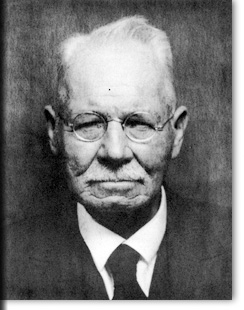|
Colegio Max Uhle
Colegio Max Uhle (german: Deutsche Schule Max Uhle Arequipa) is a German international school in Arequipa, Peru. It serves years 1-12. The school's activities began in 1956. History In 1961 the school had 269 students, with 70 in kindergarten, 41 in transition, 138 in primary, and 20 in secondary. In 1967 it moved to its current site, which was a campus built for 1,360,000 German marks, funded by the West German government. In 2002 the school began allowing preschool students after a 2001 installation of nine classrooms, funded by $530,000 USD on a plot of land. , the school has over 1,100 students. ." Colegio Max Uhle. Retrieved on March 21, 2016. See also *German Peruvian
[...More Info...] [...Related Items...] OR: [Wikipedia] [Google] [Baidu] |
Arequipa
Arequipa (; Aymara and qu, Ariqipa) is a city and capital of province and the eponymous department of Peru. It is the seat of the Constitutional Court of Peru and often dubbed the "legal capital of Peru". It is the second most populated city in Peru, after Lima, with an urban population of 1,008,290 inhabitants according to the 2017 national census. Its metropolitan area integrates twenty-one districts, including the foundational central area, which it is the seat of the city government. The city had a nominal GDP of US$9,445 million, equivalent to US$10,277 per capita (US$18,610 per capita PPP) in 2015, making Arequipa the city with the second-highest economic activity in Peru. Arequipa is also an important industrial and commercial center of Peru,Chanfreau, p. 40 and is considered as the second industrial city of the country. Within its industrial activity the manufactured products and the textile production of wool of camelids. The town maintains close commercial links wit ... [...More Info...] [...Related Items...] OR: [Wikipedia] [Google] [Baidu] |
Max Uhle
Friedrich Max Uhle (25 March 1856 – 11 May 1944) was a German archaeologist, whose work in Peru, Chile, Ecuador and Bolivia at the turn of the Twentieth Century had a significant impact on the practice of archaeology of South America. Biography Uhle was born in Dresden, Germany on 25 March 1856 and received his Ph.D. in 1880 from the University of Leipzig. He married Charlotte Grosse from Philadelphia, Pennsylvania, where he worked at the University of Pennsylvania for several years. Trained as a philologist, Uhle became interested in Peru while a curator at Dresden Museum. In 1888, a close friend, Alphons Stübel, who had recently published an article on the history of Peruvian archaeology, suggested Uhle concentrate his studies on that region. He first traveled to South America in 1892 to initiate research in Argentina and Bolivia for the Konigliches Museum fur Völkerkunde in Berlin, Germany. In that same year he published ''"The Ruins of Tiahuanaco in the Highlands of Ancie ... [...More Info...] [...Related Items...] OR: [Wikipedia] [Google] [Baidu] |
Peru
, image_flag = Flag of Peru.svg , image_coat = Escudo nacional del Perú.svg , other_symbol = Great Seal of the State , other_symbol_type = Seal (emblem), National seal , national_motto = "Firm and Happy for the Union" , national_anthem = "National Anthem of Peru" , march = "March of Flags" , image_map = PER orthographic.svg , map_caption = , image_map2 = , capital = Lima , coordinates = , largest_city = capital , official_languages = Peruvian Spanish, Spanish , languages_type = Co-official languages , languages = , ethnic_groups = , ethnic_groups_year = 2017 , demonym = Peruvians, Peruvian , government_type = Unitary state, Unitary Semi-presidential system, semi-presidential republic , leader_title1 = President of Peru, President ... [...More Info...] [...Related Items...] OR: [Wikipedia] [Google] [Baidu] |
German Marks
The Deutsche Mark (; English: ''German mark''), abbreviated "DM" or "D-Mark" (), was the official currency of West Germany from 1948 until 1990 and later the unified Germany from 1990 until the adoption of the euro in 2002. In English, it was typically called the "Deutschmark" (). One Deutsche Mark was divided into 100 pfennigs. It was first issued under Allied occupation in 1948 to replace the Reichsmark and served as the Federal Republic of Germany's official currency from its founding the following year. On 31 December 1998, the Council of the European Union fixed the irrevocable exchange rate, effective 1 January 1999, for German mark to euros as DM 1.95583 = €1. In 1999, the Deutsche Mark was replaced by the euro; its coins and banknotes remained in circulation, defined in terms of euros, until the introduction of euro notes and coins on 1 January 2002. The Deutsche Mark ceased to be legal tender immediately upon the introduction of the euro—in contrast to the o ... [...More Info...] [...Related Items...] OR: [Wikipedia] [Google] [Baidu] |
German Peruvian
German Peruvians are Peruvian citizens of full or partial German ancestry. In general, the term is also applied to descendants of other German-speaking immigrants, such as Austrians or the Swiss, or to someone who has immigrated to Peru from German-speaking countries. History Since independence Germans had been immigrating to Lima on a small scale. The first wave of immigration was in 1853, organized by then-president Ramon Castilla. These immigrants established themselves in the cities of Tingo Maria, Tarapoto, Pucallpa, Moyobamba, and in the department of Amazonas. Baron Kuno Damian Freiherr Schutz von Holzhausen, the leader of the immigration movement, consulted with the then Peruvian Minister of Foreign Relations, Manuel Tirado. The meeting's purpose was to colonize the central jungle to better link the Pacific and Atlantic coasts. The colonists would end up colonizing Pozuzo. In 1854, the first immigration contract was signed between the Baron and then-president José Ru ... [...More Info...] [...Related Items...] OR: [Wikipedia] [Google] [Baidu] |


